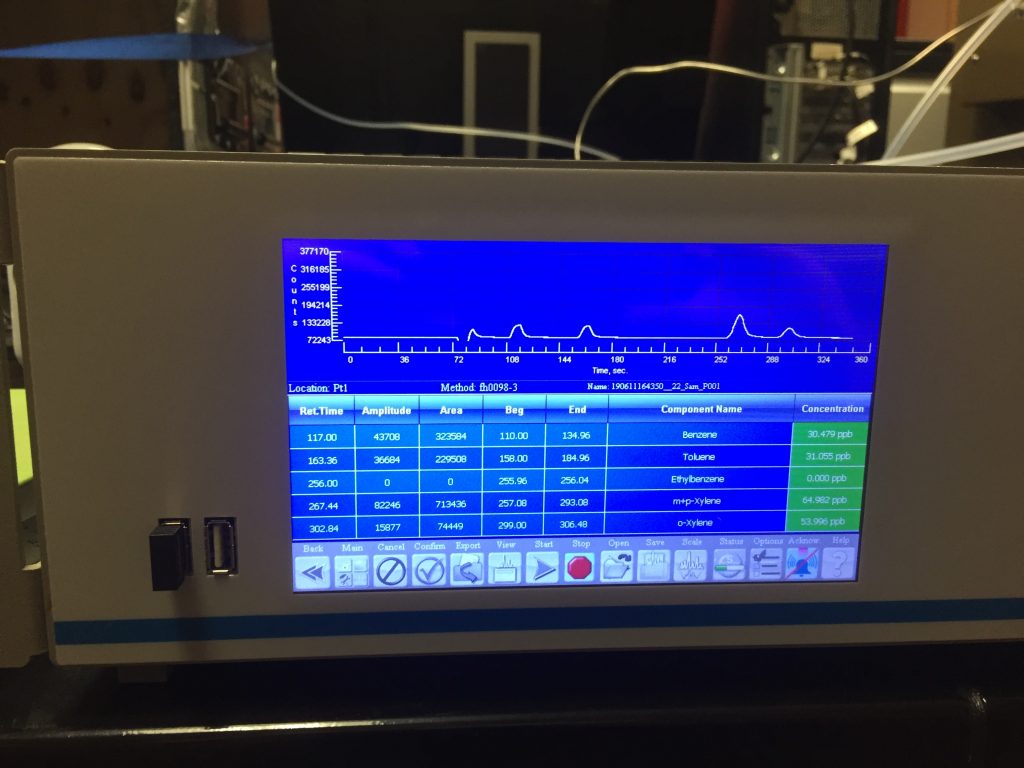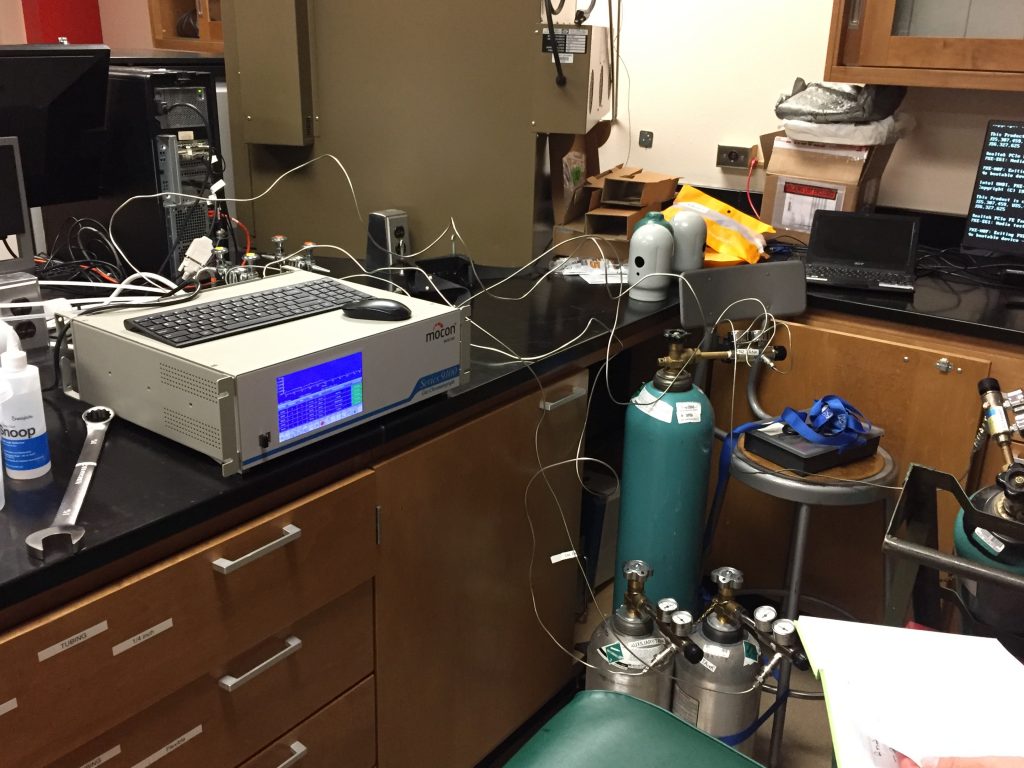First off I just wanted to say what a great time I had getting to know all of the cohorts during the RECCS introductory week activities. What an awesome and diverse group of people!
I actually started my first full week at NOAA not at NOAA. My mentor and I packed up the gas chromatograph (GC) and headed to the University of Wyoming. There we helped out a woman about to defend her doctoral thesis. The instrument she had been using gave her two times the expected BTEX mixing ratios in her calibration tank! So we brought our instrument to determine if it was their calibration tank or their instrument that was off. I was able to help prepare our calibration, reference, and carrier (nitrogen) gas tanks, as well as help set up the GC. This was a great opportunity for me to see how the process of measuring tanks works before I am doing it myself out at the drilling site. The entire process went very smoothly (not one hiccup, which my mentor assured me is very rare). We were able to get the expected measurements for their calibration tank within the GC margin for error, which means the PhD student can move along towards publishing (yay!).


